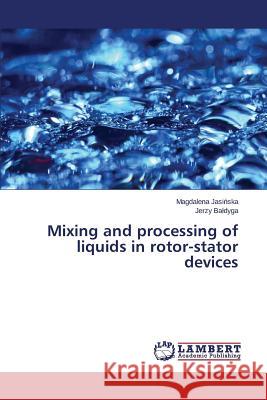Mixing and processing of liquids in rotor-stator devices » książka
Mixing and processing of liquids in rotor-stator devices
ISBN-13: 9783659638671 / Angielski / Miękka / 2014 / 116 str.
High-shear rotor-stator mixers are used in many technologies in the chemical, pharmaceutical, biochemical, agricultural, cosmetic, health care and food processing industries for homogenization, dispersion, emulsification, grinding, dissolving, performing chemical reactions with high selectivity, cell disruption and shear coagulation because of their ability to control the product quality. They are efficient energetically because of a focused delivery of energy to regions where high stresses are necessary. In this work performance of the rotor-stator mixers is investigated including: identification of the power number, drop break up, effects of micromixing on the course of complex chemical reactions, effect of agitation on mass transfer with chemical reaction in two-phase liquid-liquid systems, and energetic efficiency of mixing and mass transfer processes. Experimental results are interpreted and predicted using phenomenological models and CFD simulations.
High-shear rotor-stator mixers are used in many technologies in the chemical, pharmaceutical, biochemical, agricultural, cosmetic, health care and food processing industries for homogenization, dispersion, emulsification, grinding, dissolving, performing chemical reactions with high selectivity, cell disruption and shear coagulation because of their ability to control the product quality. They are efficient energetically because of a focused delivery of energy to regions where high stresses are necessary. In this work performance of the rotor-stator mixers is investigated including: identification of the power number, drop break up, effects of micromixing on the course of complex chemical reactions, effect of agitation on mass transfer with chemical reaction in two-phase liquid-liquid systems, and energetic efficiency of mixing and mass transfer processes. Experimental results are interpreted and predicted using phenomenological models and CFD simulations.











